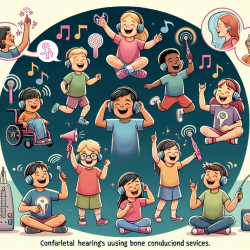The quest for early and reliable diagnosis of Autism Spectrum Disorder (ASD) has been a challenging one. Recent research, however, is shedding light on a potential breakthrough: salivary cytokine profiles. In the study titled "Salivary Cytokine Profile as a Possible Predictor of Autism Spectrum Disorder," researchers explored how specific cytokine levels in saliva could serve as indicators for ASD. This blog will delve into the key findings and discuss how practitioners can leverage this information to enhance their therapeutic strategies.
Key Findings from the Research
The study examined the salivary levels of several cytokines, including:
- Interleukin-1ß (IL-1ß)
- Interleukin-6 (IL-6)
- Interleukin-8 (IL-8)
- Tumor Necrosis Factor a (TNFa)
- Monocyte Chemoattractant Protein-1 (MCP-1)
- Regulated on Activation, Normal T-cell Expressed and Secreted (RANTES)
- Eotaxin
The most significant finding was that children with ASD had significantly lower levels of RANTES compared to typically developing (TD) children. Moreover, in TD children, the levels of IL-1ß, MCP-1, and TNFa correlated positively with age, whereas in children with ASD, these correlations were absent.
Implications for Practitioners
The results suggest that salivary cytokine levels could serve as potential biomarkers for early diagnosis and categorization of ASD subtypes. Here’s how practitioners can apply these findings:
1. Early Screening
Given that early intervention is crucial for effective ASD treatment, practitioners can consider incorporating salivary cytokine testing into their screening processes. This could enable earlier identification and intervention, potentially improving outcomes.
2. Tailored Interventions
Understanding the cytokine profiles can help in categorizing ASD subtypes, which in turn can guide more individualized therapeutic approaches. For instance, children with lower RANTES levels might benefit from specific immunomodulatory therapies.
3. Monitoring Progress
Salivary cytokine levels can also be used as biomarkers to monitor the effectiveness of ongoing therapies. Regular testing can provide insights into how well a child is responding to treatment, allowing for timely adjustments.
Encouraging Further Research
While the study provides promising insights, more research is needed to fully understand the predictive value of salivary cytokines in ASD. Practitioners are encouraged to contribute to this growing body of knowledge by conducting further studies and sharing their findings.
Conclusion
The research on salivary cytokine profiles offers a promising avenue for improving early diagnosis and individualized treatment of ASD. By integrating these findings into practice, speech-language pathologists and other practitioners can enhance their therapeutic strategies and contribute to better outcomes for children with ASD.To read the original research paper, please follow this link:
Salivary Cytokine Profile as a Possible Predictor of Autism Spectrum Disorder.










